
BY SUMIT GHOSH
INTEGRATED COAL MINES LIMITED
KOLKATA, 20 MAY 2023:
Uttarakhand is divided in two Himalayan Regions Kumaun & Garhwal. The Kumaun region is on the eastern side and is famous for hosting beautiful hill stations like Nainital, Ranikhet, Kausani, Almora, Myunsiyari and many more. The Garhwal region is on the western part and is respected by Hindus as Devbhoomi. This is the region which hosts most of Hindu Temples and also the abode for the sages and rishis from ancient time. The four famous Shrines, Yamunotri, Gangotri, Kedarnath & Badrinath commonly revered as Char Dhams, are worshiping place for Hindu pilgrims for ages. Back in old days the when the nature was untouched by the lust of mankind, pilgrims used to trek for months together in the hills to pay visit to these Dhams. Today all the four Dhams are well connected by tar road that make the journey easy and attract more visitors. Generally the Yatra days are from May to October when the Himalaya is ready to greet the pilgrims shedding its harsh snowy winter. After Diwali as the winter creeps in the visit to these shrines closes and reopens on day of Akshyay Tritiya.
Our voyage to Kedarnath started after staying 2 nights in Rishikesh (altitude 340 m). Rishikesh ‘the place of sages’ is an important spiritual center situated on the banks of river Ganga. It is surrounded by Shivalik Ranges on three sides and is the starting point of Char Dham Yatra.
We started our journey for Sonpryag (212 Km away) on a rented car at around 6.30 am with a faint fear in mind that any delay may attract traffic jam en route. After driving for couple of hours, the empty stomach started craving for breakfast, and made us halt at Devprayag (avg. hills 830 m) where we took Aloo Parantha (this is almost staple breakfast in the region) and Garam Chai. It is believed that Lord Rama and his father King Dashrath performed penance here. Devprayag is where Holy River Bhagirathi and Alaknanda merge into one to take the name of Ganga. It is the final one of the Panch Prayag. ‘Prayag’ in Sanskrit is holy confluence of rivers. Other four Prayags are from the top Vishnuprayag (altitude 1372m), Nandaprayag (1358m), Karanprayag (860m) and Rudraprayag (690m).

Devapryag Alaknanda meeting Bhagirathi
After travelling for another 70 Km from Devprayag the next important crossing was Rudraprayag, a pilgrim town on the holy confluence of Alaknanda and Mandakini. ‘Rudra’, is an aspect of Lord Shiva. According the legend, Lord Shiva appeared here as ‘Rudra’ to bless Narad Muni. From here one road leads to Badrinath (altitude 3300m). Badrinath is one among the famous pilgrim of Char Dham Yatra. Few years back I have visited Badrinath so I did not keep this in my itinerary this time. So far as other three Prayags are concern, the top most is Vishnupryag, formed by the confluence of Vishnu Ganga (known after this point as Alaknanda) and Dhauliganga. In Nandprayag, river Mandakini meets Alaknanda and the Karnaprayag is the place for river Alaknanda taking river Pindar in to it. Finally we find river Yamuna merging with the River Ganges in the Gangetic planes at Prayagraj.
This is the story of our Holy river Ganga, emerging from Gomukh (altitude 4023m), 18 km from Gangotri in Himalaya, and finally merging into Bay of Bengal at Sagar Dighi travelling for an approximate distance of 2525 Km. Many legends, many stories surrounding river Ganges are there in our mythology, but I have promises to keep, I cannot allow myself to drift away from taking you to Kedarnath.
It was evening by the time we reached Sonprayag (altitude 1894m). It is a quaint village located on the bank of River Mandakini. It is the gateway to the revered shrine of Kedarnath and is a popular stopover for pilgrims and tourists alike. We had to walk about a km and half with our luggage to find a local jeep for Gaurikund (altitude 1970m) which was 5 km away. The sky did not mercy on us; it kept on drizzling till the dawn of the next day making our first trek for 1.5 km gloomy. Later we realized that may be it was a preparation for a larger trek. Somehow passing that night in GNVM tourist guest house, on 30th May when people back home were fighting 40+ heat waves, we were busy covering ourselves with warm garments and rain coat preparing for a trek, to convert into reality the great dream of ours.

Glacier on the way to Kedar
Trek in Himalayas has always been in my dream. And trek to Kedarnath (altitude 3583m) did only happen when the Lord wanted. For a long time I had a feeling that favorable condition is required to accomplish any dream. Was I right? Or, could be my own desires were not strong enough to make the situations favorable for the dream to come true, I need to ponder. Why do we often succumb to the immediate situations and keep our own choices & preferences at bay. Is it known as compromising for a better and peaceful life? I leave it on to you. Finally it is Lord Shiva who gave the spirit to the venture to happen. In the morning we found many people are already on their way, may be they have started much earlier. There are many ways to perform the journey, by Horse or Mule, by Kandi (Porter carrying a person in a basket), by Doli or Palki (Four persons carrying a person in robust wooden seat) or on foot. The 16 Km trek from Gaurikund to Kedar is all up hill. There are also Helicopter services from 2/3 different places to Kedar directly. We opted to be on foot. There were many people who did the same; they were much younger of course. Amit was a young Nepali porter who accompanied us in our journey throughout. While the initial phase of our trek was exciting, gradually we started feeling the pain of the slope of the road. The moving horses, kandis & dollies up and down kept on impeding our movement all through. Despite all odds, the spirit of the moving people constantly kept us enthused. We went on walking as others did; initially taking rest for a while after a km walk, but gradually the pause was felt necessary after every 500/600 m. It is concrete inclined road with some steps in between on the bank of river Mandakini, taking twist and turns as the river did. Food stalls are plenty in number on both sides of the road, but the varieties are limited to Paranthas, Maggie, Assorted chips, tea or cold drinks. The charming views of the flowing springs from the mountain top and running glaciers through the cleavages were indeed captivating, but at the same time the depth & the slope of the valleys did not fail to remind us to be vigilant. We were glued to the enchanting and fascinating scenes of the mountain; often busy taking photographs of the surroundings, seldom felt the hardiness of the journey. From Gaurikund the trekking path was on the right bank of river Mandakini up to Rambara. Earlier the trek route used to be 14 KM on the right bank all through which got washed out after Rambara during the flash flood of 2013. Now the new route is 16 Km. After walking for around 6 KM we crossed the river through a steel bridge at Rambara and thereafter the route followed the left bank. The trek took us through the breathtaking landscape, including towering mountains, scenic valleys and gushing waterfalls. Although it can be challenging it is worth it for the sense of accomplishment and unforgettable memories. Short cut, no, there is no short cut. If you intend to cut short the length, you tend to enhance the gradient. You increase your difficulty. There is no short cut for the pilgrims in hills on foot. But yes, at the end of the day you will find the gracious blessing of the Lord awaiting you, to embrace you, to shower love and affection on you. After trekking for about 11 km we reached Lincholi at around 2 pm. The weather did not excuse us kept on pouring throughout the journey. This is a place having a small flat area where few tents were erected for the pilgrims to take rest at night. Not that everybody takes rest here the younger prefer to complete the journey in one go if they start early. We had a booking in GNVM tourist guesthouse. After lunch we took refuse in the dormitory. Up in the hills one has to accept the available accommodations. Choices are limited. Luxuries are yet to come. And if at all it comes it will come with a price. Price not only in terms of money alone may be at cost of nature too. It was a 12 bedded 20’x20’ dormitory, made of pre-fabricated aluminum sheet (Pota cabin) having 2 good bathrooms equipped with Geyser. Apart from us only one young couple stayed. They actually started late from Gaurikund and reached Lincholi in the evening. The room was big enough for 4 people to accommodate.
The young couple earlier planned to move for Kedarnath by 5 am the next day since they wanted to go back the same day, but the rain forbade them from doing so. Finally all of us started our journey by 7:30am. It was a 5 km long journey, most of the difficult terrain we had already covered the previous day, both in terms of the length and the gradient of the road. The renewed vigor after a good night sleep energized our walking overpowering the drizzling of rain on the way. As we reached closure to the destination the rain was converted into snowfall.

Reached Kedarnath
The pilgrims were enjoying dancing in the snow and chanting ‘Bum Bum Bole’, ‘Om Namah Shivay’ which vibrated in the atmosphere. The charged atmosphere of the chanting pilgrims infused more strength and vigor in the last lap of the trek. All tiredness faded away. A deep sense of accomplishment made all happy. It was 11 am when we reached the temple and immediately we followed the people in the line to visit the shrine. We could only take a glance of the main Shiva stone with the moving crowd. This was for a fraction of minute, obviously did not satisfy us. The Mandir is divided in two parts in one part there are stone sculpture of the Pandavas and Lakshmi Narayan on the four walls and in the second part ‘Garva Griha’ is for Shiva Stone.

Front view of Kedarnath Temple

Kedar Temple
New steel reinforced concrete buildings are coming up near the temple. Few years later, we were told, that the old buildings will be replaced by robust concrete structure more strong and secured one, able to withstand the natural calamities if encountered. Building such structures at such height is itself a Herculean task. Science is making it happen. Kedarnath which used be an isolated temple in the lap of Himalaya for ages will soon be amidst a small concrete town.
Though we had a tent to stay in Kedar booked with GNVM, but it was 1.5 km down. We decided to stay nearer to the Mandir in a brick and mortar house primarily to get a better shelter from cold and snow. We were lucky to get a 6 bedded dormitory where two other young person shared shelter with us. The young boy Sukanto Maity, our roommate, helped us getting a slot at 4:30 am for performing puja. Almost for 30 minutes we could be inside the Mandir a spiritually charged atmosphere to be in. Puja of Lord Shiva in Kedarnath in a snowing cold dawn (minus 5 deg) as we call ‘Brahma Muharat’ will remain as an indelible memory for life.
In the year 2013 the disastrous flash flood in river Mandakini devastated the path to Kedarnath to a great extent, eroding many inhabitants and the road causing huge loss of life and property. A big piece of stone then rolled towards the Mandir and saved it from the thrust of the gushing water. Can science explain this miraculous phenomenon?
The Kedar Dome (snowcapped mountain) on the north of the Mandir enhances the beauty of the area many folds. The Statue of Adi Shankaracharya is immediately behind the Mandir.

Adi Shankaraya
The name ‘Kedarnath’ means ‘the Lord of the Fields’. It is derived from the Sanskrit word Kedara (field) and Natha (Lord). Kedarnath has been a pilgrimage center since ancient times. The temple construction is credited to Pandavas.
After the puja we came back to the dormitory and packed our luggage. Amit was ready with his rain coat on and a smile on his face. This was his first trip in Kedar. He came from Nepal couple months back searching for livelihood. By 6.30 am we left for Gaurikund. It was snowing as we were coming down the hill for about 2.5 km, there after we faced drizzling rain all throughout the journey. It took us almost 10 hours to reach Gaurikund. Downhill trek is no less difficult from the uphill one. Not that our tiredness or slow walk took that time alone, it was the magnetic pull of the fascinating panorama of the magnificent Himalaya which stopped us off and on for capturing the sceneries in the camera. You ought to be a poet to be able to pronounce the enchanting Himalaya with your pen, we can only see and admire.

Advertisement:












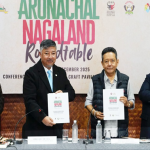

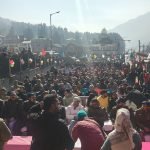

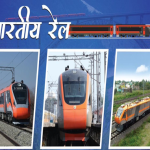



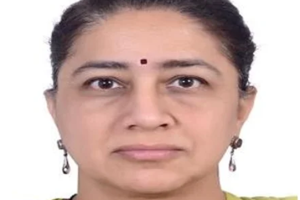
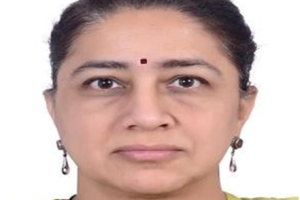
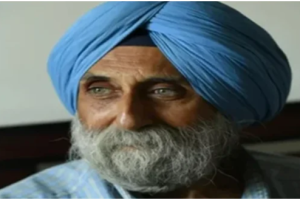







Add Comment